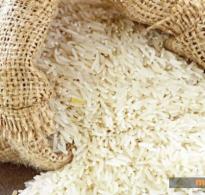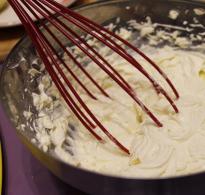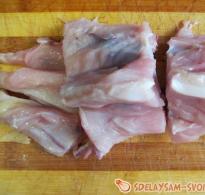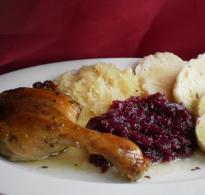German schnapps: what is it, how many degrees and how to drink? What is schnapps - the history of the appearance and technology of making German vodka, how to cook at home.
When a conversation about German vodka begins during a feast in a friendly company, schnapps is the first thing that comes to mind even for not great connoisseurs of strong alcoholic drinks.
Schnaps is associated with Germany, although it is also made in neighboring Switzerland and Alsace, a French historical region. For the Germans, it acquired almost a cult significance and began to be positioned as a kind of national alcohol.
What you need to know about schnapps
The name Schnaps comes from the Old Norse snappen, which can be literally translated as "to drink in one gulp". Tyrol, a small Austrian region, remains the main region where schnapps is made. But it was thanks to Germany that German vodka became known almost everywhere: on the North American continent, in Europe, and Asia.

Schnapps is often compared to moonshine. But, unlike the latter, it has a rich and pronounced cereal or fruit flavor. In terms of strength - 40-43% - Schnaps is almost as good as tequila or. Some varieties of the drink contain less than 30% alcohol.
Interestingly, German schnapps is fundamentally made without artificial yeast, flavorings and sugar.When Schnaps appeared
The first mention of this strong alcoholic drink dates back to the 15th century. Then it was produced on the territory of modern Austria and Germany as a medicine for rejuvenation and treatment of certain diseases.
"Potion" fell in love with the male population - and not only him. Therefore, rather quickly, schnapps began to spread throughout the German lands. Especially many distilleries appeared in Germany at the turn of the XVI-XVII centuries. Since then, the technology for preparing an alcoholic beverage has remained virtually unchanged.
What are Schnapps made of?
Recipes for some brands of vodka are kept secret in Germany. But despite this, there is a single way of production, if you do not take into account individual details. Therefore, those who are interested in how schnapps are made in Germany can easily satisfy their curiosity.

First, raw materials are harvested - grain, all kinds of fruits and even potatoes. After this, mash is prepared by spontaneous fermentation, which is then subjected to a difficult procedure - double distillation in special stills.
The raw materials for alcohol are herbs (primarily mint, St. John's wort or wormwood), wheat, potatoes, as well as many different fruits and berries.
Varieties and famous brands of schnapps
Even experts will not immediately name all varieties and brands of German vodka: there are now more than 30 varieties of schnapps in Germany. They can be divided into three types: grain, potato and fruit. German vodka is made from 12 main ingredients:
- wheat;
- mountain ash fruits;
- pear and apple alcohols;
- apricots, strawberries, cherries, raspberries, gooseberries, plums, peaches or cherries.
Each of these components (or their mixtures) characterizes a specific brand and determines its taste characteristics.

Also, the German herbal alcoholic drink, which is made by adding St. Among the brands of this type in Germany, several brands are most famous: Wurzelpeter, Killepitsch, Rumple Minze, Kuemmerling, Underberg, Jägermeister.
Schnapps infused with herbs has a bitter taste. Fruit varieties of German vodka are sweeter. Cereal varieties resemble moonshine. Among the popular German brands in the last two categories are Schladerer, Hardenberg, Berentzen, Kammer-Kirsch.
Known varieties of schnapps made from fruit and grain spirits include:
- Williamsbirne (pear);
- Weizenkorn (wheat);
- Apfelkorn (from apple seeds);
- Marillenschnaps (apricot);
- Zwetschgenwasser (plum);
- Adilitzbeere (from the fruits of mountain ash);
- Obstler (apple-pear);
- Doppelkorn (grain);
- Himbeergeist (crimson);
- Kirschwasser (cherry);
- Wildschlehe (from wild plum);
- Goldaprikose (apricot).
Schnaps: subtleties of use
Before trying German vodka, connoisseurs of traditions should definitely find out how they drink schnapps in Germany. For a drink, glasses or rounded wine glasses, designed for 20–30 ml, are suitable. Cereal varieties are usually served very chilled. Fruit - at room temperature, but not lower than + 18 ° C. Schnapps, infused with herbs, it is preferable to dilute with spring water.

The fruit from which the alcohol is made is placed in a pile of fruit vodka. You must first inhale the aroma, enjoy it and only then drink it. The fruit is first taken out of the stack with a special fork - it serves as a light snack for a drink.
A variety of dishes are served with schnapps in Germany: sausages, herring with onions, Bavarian sausages, meat. Germans drink Schnaps in small sips and use it as a digestif (an alcoholic drink that accompanies a meal) or an aperitif.
In Hamburg and Hannover, unfiltered white is sometimes added to schnapps. But this combination quickly leads to intoxication. Therefore, it is also possible to dilute Schnaps with still mineral water or fruit juice.Where to try and buy
For those who are interested in how much schnapps costs in Germany, it is important to find out in advance about the spread in prices for this strong drink. Quality German vodka is available in supermarkets and specialty stores for €10.50-20.30. More expensive varieties will cost customers 74-115 € (prices are for a 0.7-liter bottle). Of the specialized stores, the most famous is Dr. Kochan Schnapskultur located in Berlin.

To try German vodka, it is not necessary to buy it in a store. For lovers of tastings, there is another exciting opportunity - to visit one of the schnapps museums. The most famous of them are:
- in the city of Bönningheim (about 37 kilometers from Stuttgart);
- in Hauzenberg, a small Bavarian town.
In these establishments, you can also learn a lot of interesting things about the history of the production of German schnapps and feel the unique atmosphere of creating the famous drink.
Schnapps is one of the most famous alcoholic drinks invented in Germany. Despite the fact that it is not so popular in our country, in Europe it is used to make various cocktails. What is it made of and what is it?
German schnapps - is that a drink?
This alcoholic drink is made from fruits such as pears, apples, peaches or cherries. The original version does not contain any added sugar, so the schnapps is not overly sweet, but has a bright fruity aroma.
Classic schnapps is distilled fruit juice with no added sugar. But in some countries (USA) this name means something else. Americans produce a drink under the same name, which is more like a sweet fruit liqueur, as it contains a large amount of sugar and flavorings. American producers do not distill fruit juice, instead they soak fruits and berries in alcohol.
Despite the fact that this alcoholic drink is loved by many, not everyone knows the history of its occurrence. Its name comes from the German word Schnaps, which is used for strong alcoholic beverages.
american schnapps
When the drink was just starting to be produced in Germany, potatoes were used as the main raw material. In taste and strength, it was similar to our domestic moonshine. But since there is too little sugar in potatoes, it was replaced with fruits and berries.
German schnapps, unlike American schnapps, is colorless, transparent and light, without cloying and excessive sweetness. The most affordable option is apple schnapps, the most expensive is cherry.
The main condition for the production of schnapps is double distillation. Only natural juices are used, sugar and artificial flavors are excluded.
german schnapps

But the American version amazes consumers with a variety of tastes. Various spices are added to it (cinnamon, mint), it is made from various fruits and berries (bananas, apricots, peaches, blackberries, etc.).
Types of German Schnapps:
- Apfel Schnapps - made from apples, the most budget option.
- Zwetschke - based on wild plum.
- Adilitzbeere is an Austrian drink made from the fruit of the ash tree.
- Peach - to drink in pure form or in cocktails, in second place in popularity.
- Kirschwasser - cherry-based, more expensive than the previous ones. Cherry schnapps is also stronger.
- Pear - has a delicate aroma, it cannot be confused with other types of schnapps.
If you want to try different types of this drink, be sure to visit Germany and Austria. Schnapps is popular in these countries and can be found in every bar.
Schnapps: how many degrees does it contain?
Just like vodka, gin and rum, schnapps contains about 40 degrees of alcohol. Also on sale you can find options with a strength of 30% and a little lower. In any case, this drink belongs to strong alcohol.
How to choose a quality drink?
The main condition that you should pay attention to when buying is where the drink is produced. The original schnapps is made only in Germany and Austria. The American version has nothing to do with the original, it is a fruity sweet liqueur.

Schnapps: homemade recipe
If you have the desire and opportunity, you can make a German drink even at home. First you need to achieve fermentation of the fruit or berry mass, as a result you will get mash. It remains only to overtake the resulting mash twice.
How to drink schnapps correctly?
Traditionally, they drink it just like that, with ice, shots. You can also drink schnapps with beer. It is also added to cocktails, but in Germany and Austria such experiments are not welcome.
Schnapps is so popular in Germany that it is called the German national drink. It has been produced in this country since the 16th century. The fortress can be in the range of 20-40%. In appearance and taste, German schnapps resembles Russian vodka, but may have fruity flavors. It all depends on the source material.
The classic basis is grain or potato moonshine, however, apples, bananas, grapes, strawberries, cranberries can also serve as raw materials. There are more than 30 basic schnapps recipes. Peach schnapps is especially popular in Germany, Austria and Scandinavia.
The history of schnapps
The Germans say: "We call everything we are going to drink schnapps." However, schnapps is not exclusively a German invention. The drink appeared simultaneously in Germany, Austria and several other Scandinavian countries. However, Austrian schnapps is not popular, it is not supplied to the world market. The fact is that in Austria small companies are engaged in the manufacture of schnapps. Due to lack of funds, they supply this alcohol in quantities sufficient for consumption exclusively by local residents. The Austrians drink their own schnapps, so the drink is little known outside the country of origin.
The Old Norse word "snappen" is translated as "drink in one gulp, swallow." The first written mention of the drink dates back to the 15th century. The production of schnapps in large wineries began at the end of the 16th century. Enterprises for its production were built where Germany and Austria are today. Tyrol is still the center of production.
Initially, the schnapps recipe was used to prepare a medicine for almost all diseases. This "elixir" was credited with rejuvenating properties. Later, schnapps began to be consumed simply for pleasure, as a heady drink.
Raw materials for making schnapps
A schnapps recipe can include a variety of products. However, preference is given to fruits and berries. There is also plenty of classic grain and potato moonshine flavored with herbs. Each reputable producer has established relationships with a reliable supplier of wild berries. Such a picker knows his secret berry places in the nearby forests.
Sometimes German schnapps is aged in glass bottles, but barrel aging is rarely used. The highest quality drinks are still prepared according to recipes preserved from the 1500s. They do not include sugar and chemical flavors. There are many varieties of schnapps, only industrial ones number more than 30. This alcohol is also produced by pubs and restaurants according to its unique recipes.
potato schnapps recipe
The basis for classic schnapps is often potato moonshine, which can be prepared at home.

- The potatoes are washed and chopped as finely as possible in any way possible.
- Potato porridge is poured with hot water at the rate of 300–500 ml per 1 kg. The mass is brought to a boil and boiled for at least 1 hour. It is best to use open steam heating from a steam generator. Ready porridge should have a translucent consistency without clots and lumps of starch.
- The mass is cooled to 70°C and the enzyme amylosubtilin is added. Stirring occasionally, keep at this temperature for 20-30 minutes.
- An aqueous solution of the enzyme glucomarin is added to the wort diluted with amylase. The temperature should be between 65-68°C. The mass is insisted in this mode for 30–60 minutes until the starch is completely saccharified.
- The wort is cooled to 30°C and yeast is added to it.
- When the mash is ripe, it is distilled, warming up with steam. The distillate is diluted with water to 12-15% and re-distilled with the selection of "heads" and "tails". The resulting potato moonshine will have a strength of 45–60%. It is diluted with softened water to the desired strength and cleaned with a filter.
How do you drink German schnapps?
Schnapps is an unpretentious drink; there are no strict rules for drinking it. However, this strong alcohol can be drunk beautifully and with pleasure. German schnapps is poured into small rounded wine glasses in portions of approximately 20 grams. Depending on the type of drink, a small pear or half an apricot is placed in a glass. Schnapps is filtered drop by drop to enjoy a delicate aroma and a pleasant aftertaste.
Another way is to drink in one gulp. A special fork is attached to the glass, they catch the fruit with it, evaluate its aroma, drink the contents of the glass and eat this fruit. Schnapps is said to aid digestion after a feast of "heavy" foods, such as fatty German sausages or duck.
You can’t do without schnapps if there are herring or crayfish with fragrant dill on the table. Drinking is often combined with drinking songs.
- this is to some extent our moonshine, but only with a more pronounced aroma of fruits, herbs, berries, spices and roots. It cannot be called an independent drink, it is rather a generalized name for a separate category of strong alcohol.
History of Schnapps
It is generally accepted that the history of the alcohol we are considering begins in Germany, and it is its national treasure. But this is more of a myth than the truth. Historians claim that for the first time the production of schnapps was launched back in the 15th century in Austria, and only over time the technology of its production migrated to the Germans.
German schnapps producers are more represented on the world market, although the center of production is still located in Austria (Eastern Alps region, Tyrol). There it is produced by small companies, so the drink is little known outside of this country. Austrian schnapps is more popular among the local population.
Also in the world there is the so-called "American schnapps", but it is rather a liquor that is made on the basis of schnapps, since its strength is almost half that of a real drink.
The American counterpart has 20-25 degrees, and the original product is usually 40 degrees, but in rare cases 30.
Schnapps production technology
For the production of schnapps, a double distillation method is used. Fruits, herbs, berries, roots and even potatoes are taken as raw materials. But in order for schnapps to get an original taste and excellent aroma, it is better to use wild fruits.
Certain types of schnapps are aged, usually in glass bottles, but in rare cases an oak barrel is used.
To date, more than 30 types of schnapps are known. The most common is "Kirschwasser" (cherry schnapps), which means "cherry water". The local people in the Black Forest have a long tradition of pouring this type of schnapps over the cake before serving it.
Schnapps culture
The ideal temperature for schnapps before serving is 16 degrees, but this rule does not apply to cereal schnapps, as they do not have a characteristic and pronounced aroma and are best served well chilled.
This drink goes well with traditional German and Austrian cuisine.
There are four ways to drink schnapps:
- Traditionally, schnapps is served in small cognac glasses. First you need to inhale the aroma of the drink, and only then drink the contents of the glass in small sips.
- A small slice of the fruit is placed at the bottom of the glass, from which the drink is made, then schnapps is poured. Before use, we take out the alcoholized fruit with a skewer, inhale its aroma, drink the contents of the glass and snack on the “drunk” fruit.
- To reduce the strength of schnapps, it can be diluted with non-carbonated mineral water or fruit juice.
- An "extreme" way, they like to use it in Hamburg. The whole point of this method lies in the fact that schnapps must be washed down with beer. But for each type of schnapps, a certain type of beer is suitable. Pear schnapps goes well with light beer, cherry schnapps goes well with dark beer, and apple schnapps goes well with lager.
How to make schnapps at home
To prepare this drink at home, it is important to remember a few basic rules:
- Schnapps can be made from almost all organic ingredients and even porcini mushrooms.
- During the preparation process, granulated sugar and yeast should not be added to the drink.
- Before cooking, it is better not to wash fruit raw materials so as not to kill the “live” yeast.
- It is important to use high quality raw materials without rot and mold.
Austrian schnapps (classic) from potatoes
This drink was prepared in the 15th century, but since potatoes have a low sugar content, it looks more like a simple moonshine.
In the original recipe, yeast is not added, but at home, wine yeast can be used for fermentation.
Classic potato schnapps has a characteristic bitter taste.
Ingredients
- Potato - 1 kg
- Water - 500 ml
- Amylosubtilin enzyme
- Enzyme glucavamorin
- wine yeast
Cooking Method
- Potato tubers must be washed and chopped with a blender or grater.
- Boil water and pour it into the potato gruel, then put on the stove and cook for 1 hour over low heat (it should turn translucent).
- Now we cool the resulting mass to 70 degrees, add the amylosubtilin enzyme (it is necessary to thin the wort) and stir for 30 minutes, maintaining the temperature at 70 degrees.
- We cool the wort to 65 degrees and add the enzyme glucavamorin for sugaring.
- Let it brew for 1 hour so that the starch is completely sugared.
- Then we add yeast to the 30-degree wort and leave it to ferment for 7 days.
- Ripe mash must be distilled twice, and distillate up to 12–15%, separating the “head”.
- We dilute the finished Austrian schnapps with water and pass through the filter.
- Pour into glass bottles.
apricot schnapps
According to this recipe, you can make apple schnapps, pear schnapps, or any other fruity German moonshine.
Ingredients
- Ripe apricots - 10 kg
- Water - 10 l
Cooking Method
- Before starting cooking, apricots do not need to be washed, but it is imperative to remove the seeds and knead until a homogeneous mass.
- Pour apricot puree into a fermentation container, add 3 liters of water and mix well.
- Cover with gauze and transfer to a dark warm place (18-28 degrees) for 3-4 days.
- As soon as the first signs of fermentation appear (hissing, sour smell and foam), add another 5-7 liters of water to the mash (the amount depends on the sugar content in the berries). It is important for us to get liquid mash.
- Now, instead of gauze, we put a water seal on the neck and transfer it again to a dark, warm place for 20–45 days.
- After the complete end of fermentation, when bubbles do not appear for several days, we distill the apricot mash through a moonshine still. We finish collecting the product when the strength in the stream is below 30%.
- Now you need to determine the amount of pure alcohol, measure the strength of the drink and up to 20% pure water.
- We again distill the diluted moonshine through the apparatus, be sure to remove the “head” (the first 10% of the yield from the amount of pure alcohol). The collection of the product must be stopped when the fortress drops to 45 degrees.
- Ready schnapps is necessary up to 38-45 degrees.
- Pour into glass bottles and leave to stabilize the taste for 5 days in a cool dark place.
mint schnapps
This recipe is suitable for preparing schnapps from raw materials that cannot start the natural fermentation process, for this, 96% ready-made alcohol is used.
Similar to mint schnapps, you can make walnut schnapps or vanilla schnapps.
Ingredients
- Mint - 30 leaves
- Carnation buds - 12 pcs.
- Dried wormwood - 1 cup
- Dill seeds - 6 g
- Anise - 8 g
- Alcohol (96%) - 500 ml
Cooking Method
- All spices and spices are transferred to a glass container and filled with high-quality alcohol.
- Let it brew for 1 month in a dark place at room temperature and do not forget to shake it once every 3-5 days.
- As soon as a month has passed, the tincture must be filtered through cheesecloth or a fine strainer.
- The prepared tincture must be up to 20 degrees and distilled twice through the moonshine still.
- The "head" does not need to be collected, since we use ready-made alcohol. The collection of the product must be stopped when the strength of the jet is below 45 degrees.
- Ready schnapps is poured into glass bottles.
Schnapps is so popular in Germany that the Germans consider it a national drink and respect it no less than the French cognac and the Russians vodka. Schnapps - what is this drink and how to drink it correctly? Let's talk about it in the article.
What is schnapps?
Schnapps is obtained by distillation of mash from fruits or grains, without the use of any additives. Its basis can be pears, apples, strawberries, bananas, grapes, peaches and other fruits. According to the classic recipe, schnapps is made from potatoes or grains and various herbs. The taste of this drink varies from very bitter to very sweet. Fortress - usually not higher than 38-40 degrees.
A bit of history
Unlike some alcoholic beverages, schnapps, let's say, has more than one homeland. It appeared at approximately the same time in Austria, Germany and others. That is why we can safely say about schnapps that this is the Nordic national drink. However, real Austrian schnapps is little known to the world, as the Austrians produce it in small quantities and only for their own use.
From Old Norse "schnapps" ("snapper") means "to drink in one gulp". The first mention of this wonderful drink dates back to the 15th century. Schnapps-producing distilleries appeared on the territory of modern Germany and Austria around the 16th and early 17th centuries. At first, schnapps was exclusively a medicinal product that was used to treat almost all diseases; in the Middle Ages, it was believed that this drink had a rejuvenating effect on the body. But soon schnapps became a famous fast-intoxicating alcoholic drink, but they drank it only in order to enjoy it (how to drink schnapps will be described below).

Production technology
In the production of this classic schnapps, sugar, dyes, flavorings are not used. A variety of raw materials are used for alcohol, but most often wild berries and a variety of juicy fruits are the main source of products. However, classic schnapps is also very popular among drinkers and discerning experts. Every large and serious schnapps grower has a staff of reliable, highly trained wild berry pickers who know where the best fruit grows.
Manufacturers put a lot of love and work into the process of making schnapps. Berries are not only harvested, but also processed exclusively by hand. After they spontaneously ferment for several months. Then the finished mash is subjected to double distillation in specially designed copper stills. As a rule, schnapps is not aged in oak barrels, as is customary for many alcoholic beverages, but is immediately poured into glass bottles, in which it goes on sale.

Varieties of the drink
So, schnapps, what kind of drink is it and how is it produced, we found out. However, you should know that there are a huge number of varieties of schnapps. Only about 30 industrial species are known. Therefore, everyone can choose schnapps to their liking. In the production of the drink, unique methods of preparation are used each time. Schnapps has no analogues, therefore it is simply impossible to convey its aroma and taste in words or compare it with any other alcoholic beverage.
The most popular types of schnapps:
"Rumple Minze" (mint);
"Kirschwasser" (cherry);
"Zwetschke" (from wild plum);
"Schladerer Williams-Birne" (pear);
"Obstler" (a mixture of pear and apple spirits);
"Adilitzbeere" (based on the fruits of mountain ash).
Pear schnapps with a whole pear in a bottle has a very interesting and unusual look. However, this only at first glance seems surprising and impossible. In fact, everything is quite simple, although laborious - around the middle of May, the ovary of a pear fruit is placed in a bottle tied to a branch. In a transparent bottle, the pear ripens in the usual way. At the end of August, together with the container, the pear is separated from the branch, washed thoroughly and filled with alcohol based on pears.

How to drink schnapps?
What kind of drink this is, most of us still know, but far from everyone knows how to use it correctly. It is customary to serve such alcohol in rounded cognac-shaped glasses of small size. A serving should be no more than 20 grams. A small pear or a slice of apricot is placed in a glass. Also, a small fork must be attached to a glass with a drink in order to catch the fruit floating in the schnapps, inhale its aroma, then drink the contents and eat this fruit. Schnapps can serve as an aperitif, accompany meals, or be a digestif that aids in the digestion of fatty foods. Traditional snacks for a drink are but you can also serve herring or even crayfish. Some connoisseurs wash down schnapps with beer. Such an unusual combination of drinks in Hamburg is called "Lutt-on-Lutt", in Hannover - "Luttier-Lage". If alcohol seems too strong for you, dilute it with freshly squeezed fruit juices or water.

Finally
Before buying a bottle of such alcohol, carefully study the etiquette, there is a risk of purchasing a drink of inadequate quality. With poor cleaning, it may contain aldehydes and which can cause much more serious harm to the body than alcohol itself. Remember, real schnapps is produced exclusively in factories in Germany or its environs. Well, you learned about what schnapps is from this article.






